|
We have packaged a good amount of bees in our time and we have been asked to share our process. Here is how we do it. Please note, this is our take and please use this as a reference. We recommend you follow the instructions you have been provided by your bee supplier but feel free to ask us questions on how we take on this process. Step 1: We wet the bees down while they are in the package with warm water. Don't soak them too much. If it is a colder day we sometimes skip this step. Step 2: Next remove the wood that is covering the feed can. Use your hive tool and keep the cover close by for when you are finished with Step 3: Carefully remove the can from the hive. Keep hold of the metal tab, which is attached to the queen cage and slowly remove the can. This can be tricky but the key is to work the can up without dropping the queen cage into the cluster. Once the can is removed, put the wood cover back over the opening and set the queen and can aside. Step 4: One side of the cage has white candy in it with a cork. The other side has just a cork. Remove the cork from the candy side only. Step 5: We then hang the queen cage with the candy side facing down. If there are worker bees in the cage with queen then hang the cage candy side facing up. The cage should be centered and placed 3 to 4 frames from the side of the hive. Step 6: Before dumping the bees, bump the box on the ground to get the bees at the bottom of the package. Now take off the cover and shake the bees over the frames right over the queen. You can do this with half the bees and let them get settled before dumping the rest. However, we typically shake the bees all at once. Step 7: Shake the package side to side to get the last remaining bees. We try to empty them all out but if there are stragglers we place the box in front of the hive. Step 8: We then place the remaining frames back into the hive and make sure the hive has a source of food. We like to use in frame feeders that take up a frame space. Step 9: Seal the hive up with the outer cover and then use an entrance reducer with the smallest opening option. Step 10: We do not inspect the hive until at least 6 days later. Categories All
0 Comments
February in the Northeast of the United States is a short month but our bees are getting ready for the spring. Maple syrup has started to run and in a month we will start seeing the red of the maple buds. Maples along with Willow trees provide an important source of early nectar and pollen for the bees in the month of March. However, it is a good idea to provide supplemental sources of pollen for your bees during this month as well.
The best way to do this is to provide pollen patties which can be purchased at any number of bee supply companies. The pollen that your bees have stored at the end of the fall will be consumed or be in short supply and the pollen being brought in may not be enough to support the brood that the hive should be producing during the late winter/early summer time frame. We suggest placing one patty per hive during a warm day that is at least above freezing. The pollen patty is placed on top of the frames or on top of the inner cover where the bees can easily access it. In other cases, we have placed a spacer to provide some more room between the top deep and inner cover. We have had success using all three approaches. The key is to keep from having the patty interfere with the bees access to top of the hive and/or prevent it from keeping moisture from venting from the hive. Another suggestion is to keep the paper found on bottom of the patty on and allow the bees to access it from the top. There are scenarios where the patty could get wet and break apart in the hive. This is not common but it has happened on some of our hives. Finally, make sure you bees still have honey available and provide frames of capped honey if they are short. If you don't have extra frames to provide it is still best to use fondant rather than winter sugar syrup. Here is New Hampshire we still can expect cold days and its best to keep the bees on solid sugar products rather than liquid. August 18, 2018, is National Honey Bee Day and we will be hosting a discussion on honey bees at the Goss Farm located at 251 Harbor Road in Rye, NH. The event will be sponsored by The League of Conservation Voters who will be providing refreshments.
The discussion will start at 4pm and we will meet by the historic Goss Barn. SeaBee Honey will discuss the challenges honey bees and other pollinators face as we lose more habitat to development, the increased use of pesticides and the impact of globalization on our pollinator health. SeaBee Honey has numerous apiaries in the area and has a number of hives at the Goss Farm to help with the pollination of the orchard and community garden at the site. SeaBee Honey also will have an observation hive on site to help demonstrate the workings of the honey bee hive. We hope to see you there! Imagine if you were running a successful business and your top leadership or producers along with 50% of the staff decided to pick up and leave one day. Making matters worse, the departing group raided your inventory and took a good portion with them when they left the company. The investors and or owner in the company would not be happy. That is what happens when a honey bee hive swarms.
Swarm Basics A honey bee swarm is the natural process whereby the hive splits or reproduces. The honey bees (not the queen) make a collective decision to pick up and leave. In the days preceding the swarm, the queen slows down her brood making duties and the workers make a series of swarm cells, which are queens that will fight it out to replace the departing queen. On the day of the swarm, the workers that are leaving chase the queen out of the hive where she flies a short distance to a site where the departing honey bees will cluster. The cluster then sends out scout bees in various directions. The scouts search out new hive locations and bring back the information to the cluster. The new location could be a hole in a tree, the side of an old barn, or a swarm trap placed by the beekeeper. The cluster actually votes on the locations until they come to the winning location. Once it is decided, the cluster of bees flies off to their new home. Destined for Failure Back in the olden days (before varroa and tracheal mites), this wasn't such a bad thing. The bees would set up in a tree and build out a nice little home that would become a working feral colony. Old timers love to talk about secret bee trees that they knew about in the woods that housed generations of bees. Unfortunately, those times are long gone. In New England a feral colony is not going to last long without a save from a beekeeper. Varroa is likely going to kill the hive within a couple of years if not sooner. Meanwhile Back at the Old Hive The old hive is now scrambling to make things right. The new queens will start emerging and fight out for dominance. In some cases the hive might throw a secondary swarm with one of the new queens. Either way it typically is a hot mess for the beekeeper to manage. The hive now needs to be replenished and the new queen must be established. A beekeeper will typically look to introduce their own queen from an known queen rearing facility or supplier. Some beekeepers may elect to have one of the emerging queens become the new queen but that involves the risk of the queen not being properly mated or having it not return from its mating flight. If that occurs, there is a good chance the hive will fail. Swarms Happen There are a number of things that can be done to prevent swarms. What we like to do is split large colonies that have over wintered early in the spring or after the first honey flow. The earlier the split the better. We also make sure the hives have plenty of room but not too much that makes it hard for the bees to properly patrol the hive. We also try to re-arrange frames so that the bees do not have the sense that they are bound by brood or honey. Finally, after we do all these things and inspect the hives on a regular basis - we always have a swarm. They just happen even if we did everything right. The swarm in the caption was from a hive that was identified as a swarm risk. The old queen was moved off to a new hive along with 5 frames of bees, a new queen was introduced, a false swarm was done by the beekeeper and the hive was arranged with plenty of new space. And they still took off a few weeks later with the new queen. Clearly the decision to swarm which was likely made weeks prior to the swarm itself was still in place with the workers. Off they went. So it can be discouraging but it is not the end of the world. If you can't capture them yourself the next best thing is if they are captured by another beekeeper. If not, the new business venture is going to fail within a few years. #seabeehoney #swarmshappen A call came in this week from someone that had cut into a White Pine tree in Boxford, MA and discovered a honey bee hive. They asked if there was anything they could do to save it and they were willing to bring it to me to see if we could salvage it.
When the person arrived in Rye they had these large pine logs in the back of their truck covered with tarp. Since we had temps in the 30s the bees stayed in the cluster protecting their queen. The entire core of the tree was hollow and the tree had 4-5 inches of solid wood around the perimeter. I was able to get the bees out and put them into a very cozy nuc (a small hive) which was warmer than the tree they were in. The comb was carefully placed into the nuc hive and the bees were able to retain the cluster. Putting the bees into a larger hive was out of the question because they didn't have the bees to keep the hive warm. After making sure the bees had enough comb and bees in the nuc we closed it up and sent it back to a site close to where is was found. The prognosis for the hive isn't good since the population was smaller and the bees were likely from a late season swarm. The other issue was the fact that bees were not treated for varroa mites. Our visual inspection of the bees showed no signs of mites but it was too cold to apply a mite treatment on the hive. The new owners would need to wait till the spring to decide on a treatment. So why do honey bees select hollow trees? Ideally the bees want to find any cavity that will hold the colony. When a hive has swarmed the bees will send out scouts looking for the ideal location. It will typically be south or west facing, 10-15 feet off the ground and have good insulation from the cold. This pine tree met that criteria and the bees built out the comb once they entered their new home. The picture below shows just how nice and thick this tree was and it clearly had some good insulation for the bees. We hope these guys make it but only time will tell. Please join us for an event where we will present with the League of Conservation Voters and Marklin Candle. The event will take place from 5:40-7:00pm at the Throwback Brewery in North Hampton, NH. The agenda is as follows:
Portsmouth, NH 2017 SwarmA friend of us has a property in the center of Portsmouth, NH which has an old barn that is over a hundred years old. This part of Portsmouth used to be farming land and the city has built up around it. Old barns are a favorite nesting site for honey bees, especially old ones that still have comb. The reason being is that scout bees looking for a new home will report back to the swarm cluster that there is comb in the new nesting location and it had been a home to prior colonies. When the hive decides to make it a home they bees fly on over and start to file into the location. This is when the air will fill with bees as the thousands upon thousands of bees make their way to the new home. The video below shows the activity of bee moving into their new Portsmouth, New Hampshire home in the Summer of 2017. If you have a honey bee swarm or honey bees living in your home - call us at 603-682-7898 for a swarm recovery. We had a great event yesterday where we discussed the challenge of climate change on native pollinators and honey bees at Applecrest Farm in Hampton Falls. New Hampshire.
The event was set up by The League of Conservation Voters and hosted in the orchard at Applecrest Farm. As the LCV states in the brochure for the event: "Bees are losing their habitat due to climate change-changing temperatures and weather conditions have restricted the areas where bees can survive. While climate change threatens many species, bees and other pollinators have received special attention because of the important role they play in agriculture and supporting our food supply." We at SeaBee Honey provided an overview of the different insects responsible for the pollination of the orchards at Applecrest. We also discussed the challenges faced by our pollinators including early blooms in February that disrupted the peach crop in past seasons, drought conditions in late summer, and other climate change impacts that have caused issues for our bees and the native pollinators in the region. Thank you to everyone that attended the event and took the time to take a look at the honey bees in our observation hive. 12/1/2016 Seabee Honey to Present at Rye Public Library Topic: Bee Population health and ClimateRead NowWe will be presenting a session on Bee Population Health and Climate at the Rye Public Library on December 6, 2016. The event is once again hosted by the League of Conservation Voters and the details are as follows:
JOIN THE LEAGUE OF CONSERVATION VOTERS and SEABEE HONEY for A DISCUSSION TO HIGHLIGHT THE IMPACT OF CLIMATE CHANGE ON OUR BEE POPULATION Monday, December 5th, 2016 5:30 PM Rye Public Library 581 Washington Road Rye, New Hampshire Bees are losing their habitat due to climate change – changing temperatures and weather conditions has restricted the areas where bees can survive. While climate change threatens many species, bees and other pollinators have received special attention because of the important role they play in agriculture and supporting our food supply. Learn about the important role that bees play in our ecosystem and agriculture and how we can take climate change action! The program will include a discussion with Joe Marttila, owner of SeaBee Honey and manager of apiaries at many New Hampshire farms and orchards. Joe is an experienced beekeeper and will provide background on bee behavior and their importance to our ecosystem and agricultural heritage. Seabee Honey Saves a Hive of Bees Located in the Side of a HouseWe received a call earlier in the month asking us if we could help remove a hive of bees located in the side of a house in Hampton, NH. Knowing we were dealing with an established colony it wasn't going to be an easy job getting them out.
The bees were located above the second story of the home and they had set up a hive in the soffits. After locating the entrance we needed to remove some of the trim of this very old house. We removed the trim very carefully and smoked the bees to keep them docile. This hive had a very nice temperament even though we had broken into their home. Once we accessed the hive we found these beautiful round wax combs that were likely only a month or so old. The space was long but not tall so the small round combs had the look of Ross Rounds. I was able to remove the queen and get the bees into a nuc box. The bees were then carefully brought to the base of the house where the nuc was to sit for a day so we could collect the bees that were out foraging. After a day we were able to swing by the house and grab the nuc. From there we moved the bees to an apiary in Hampton Falls that was over 3 miles away. The hive was a late-season swarm and did not have the bees to make it through the winter. This hive will probably be combined with a stronger hive in the fall. Feel free to call us ff you have a swarm or a colony of bees living in your house. We will do everything in our power to try to help any pollinators that may be living in your home and help relocate them to a farm or apiary where they can help our local farmers. For the last couple of years, we have been working with the Rye Conservation Corp and Rockingham County Conservation District to provide pollination education to the community and area schools. Recently, we had students from the Rye Junior High come down to tour the farm, harvest pumpkins they planted in the Spring, and tour the apiary.
We love working with the students and we bring out our charts and educational materials whenever we can to help demonstrate the importance of pollinators. One of the most effective learning aids is the observation hive that allows us to pull a frame of bees from an existing hive and place it in a protected plexiglass construct. This allows us to show the different types of bees, honey, brood, and pollen. Everyone loves to see the queen so we are always sure to have her in the observation hive. If we capture just the right bees at the right time we can demonstrate the bee dance used by foraging bees to communicate the location and type of pollen/honey they have found. While the queen is always a hit a dancing bee is one of the most amazing sites that we can show to a group of students. If you are interested in having a honey bee overview or visit to an apiary please reach out to us to learn how we can make it happen. |
Details
SEABEE HONEY BLOGAuthorA beekeeper in New Hampshire [email protected] Archives
December 2023
Categories
All
|
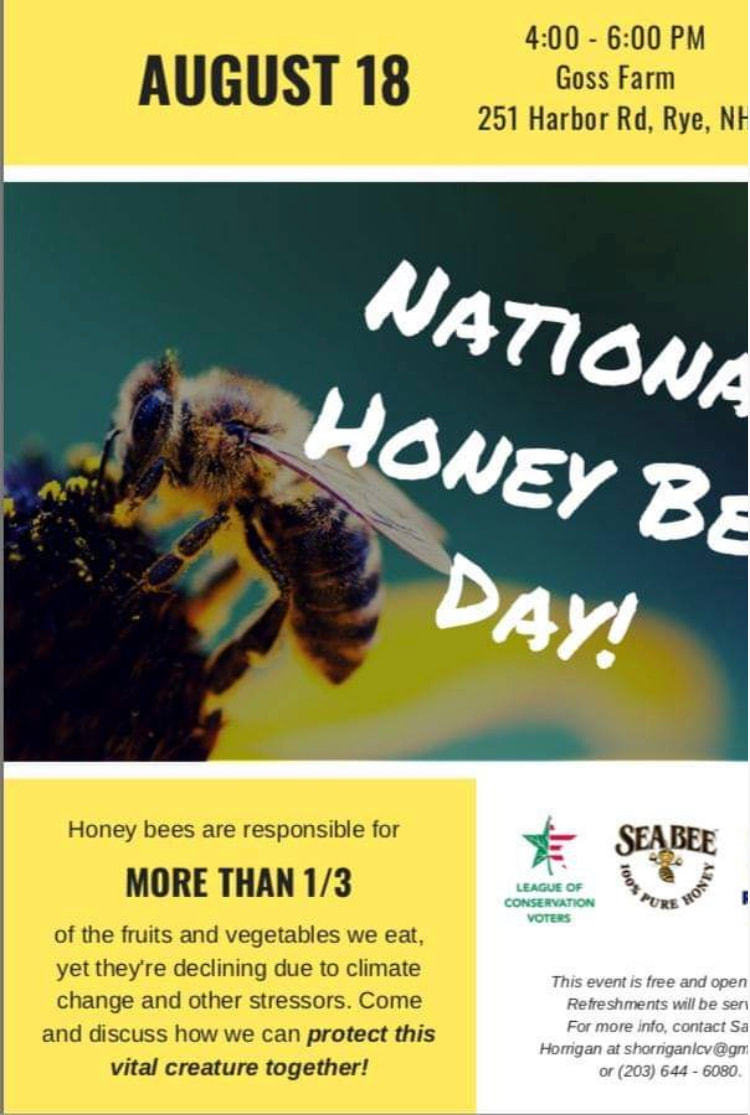
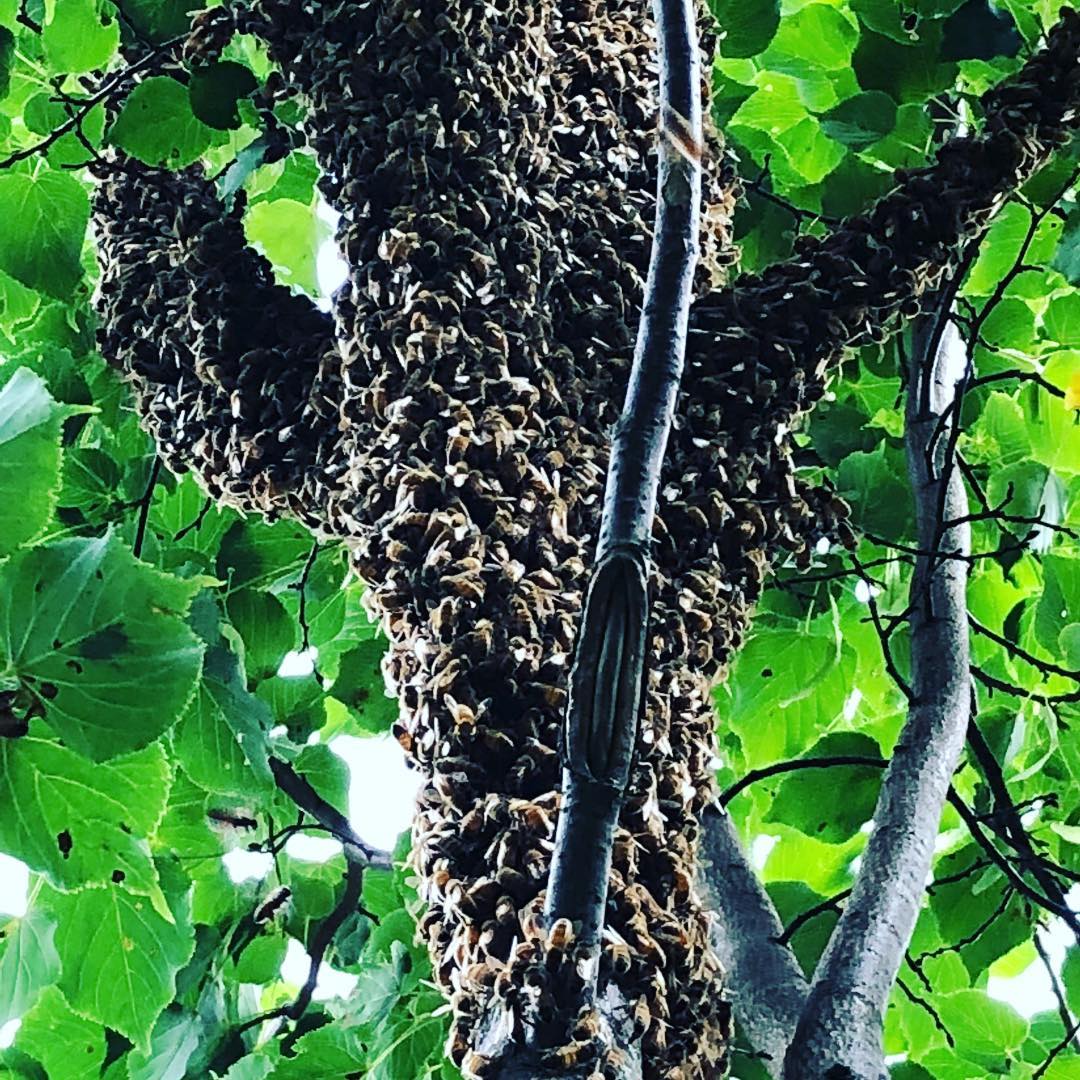
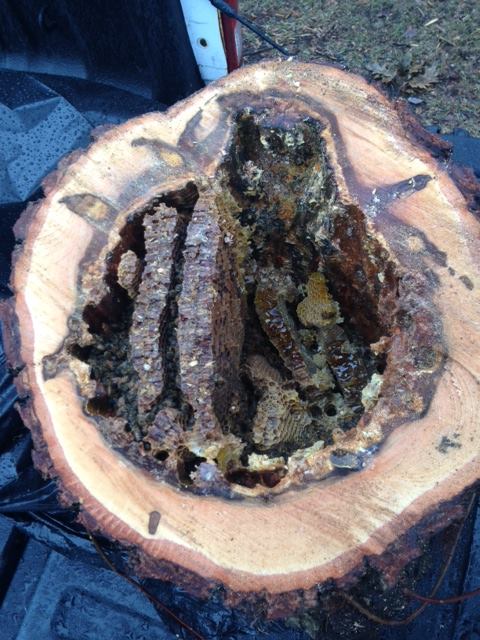
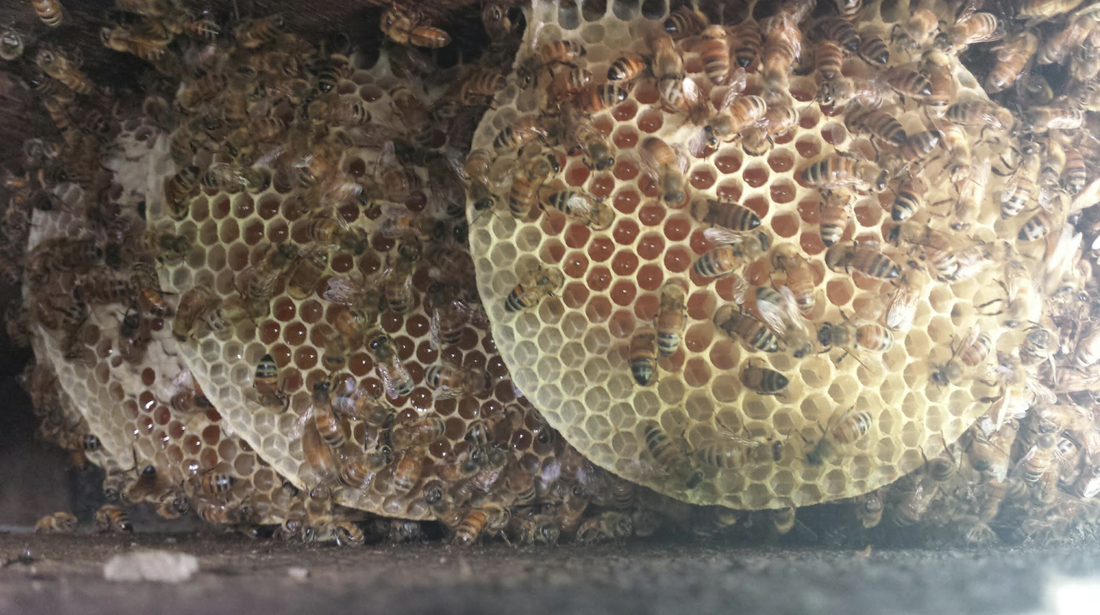
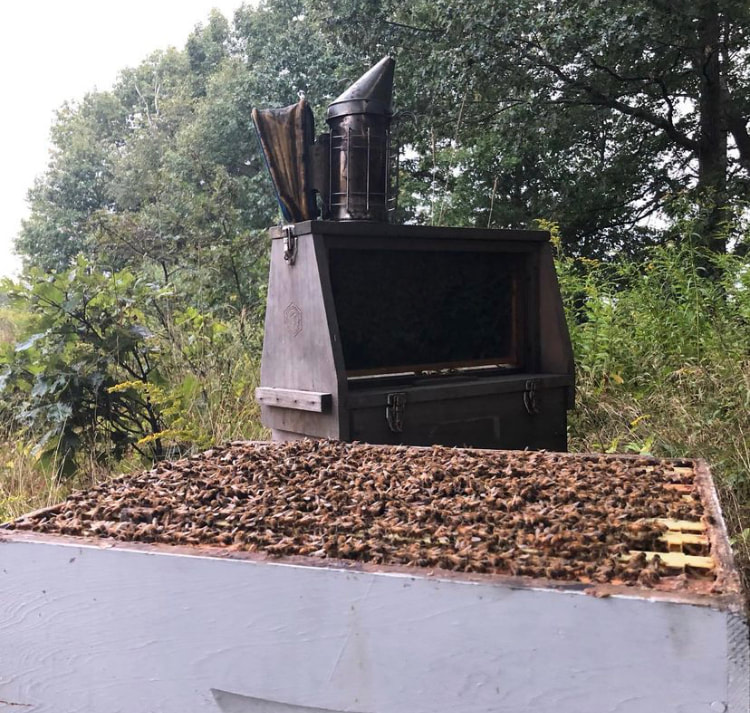

 RSS Feed
RSS Feed